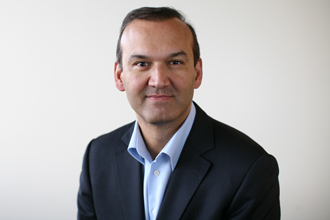Examining rates of childhood mortality due to disease in India

By Ana Gajic

Dr. Prabhat Jha
In a recent study published in eLife, Dr. Prabhat Jha, the director of the Centre for Global Health Research at St. Michael’s Hospital, and his team set out to understand mortality in children in India due to pneumonia and diarrhea.
Between 2005 and 2013, these conditions killed about 200,000 Indian children and about one million children worldwide. We sat down with Dr. Jha to find out more about this research.
What did you set out to study?
Future declines in these conditions — which cause the most child deaths — require information on what are the specific causes of disease. We proposed a novel way of combining nationally representative cause of death surveys — using verbal autopsy, which is a structured interview with the living members in households where children have died — with seasonality and climate information to identify causes.
We also reviewed the prevalence of sub types of pneumonia and diarrhea in the country based on the literature to estimate the burden from these preventable or treatable conditions.
Why were you interested in this topic?
Pneumonia and diarrhea control are key to progress in child health in India and worldwide.
What were the key findings of this work?
Deaths due to pneumonia in children in India were greatest in January. In the humid subtropical region of India, there were higher rates of pneumonia death in the summer. Diarrhea deaths peaked in July and January while deaths from fever and bloody diarrhea showed little change from season to season. This type of study can inform vaccine introduction.
Why are these findings important?
These are the first ever nationally representative data on causes of death with novel methods to estimate the set of reasons behind each condition. This type of information can be used in planning, for example, how India should expand newer vaccines that save kids from these two conditions.
What’s next for this work?
We would like to extend this study to other settings, such as countries in Africa.
About St. Michael’s Hospital
St. Michael’s Hospital provides compassionate care to all who enter its doors. The hospital also provides outstanding medical education to future health care professionals in more than 27 academic disciplines. Critical care and trauma, heart disease, neurosurgery, diabetes, cancer care, care of the homeless and global health are among the Hospital’s recognized areas of expertise. Through the Keenan Research Centre and the Li Ka Shing International Healthcare Education Centre, which make up the Li Ka Shing Knowledge Institute, research and education at St. Michael’s Hospital are recognized and make an impact around the world. Founded in 1892, the hospital is fully affiliated with the University of Toronto.
About Unity Health Toronto
Unity Health Toronto, comprised of Providence Healthcare, St. Joseph’s Health Centre and St. Michael’s Hospital, works to advance the health of everyone in our urban communities and beyond. Our health network serves patients, residents and clients across the full spectrum of care, spanning primary care, secondary community care, tertiary and quaternary care services to post-acute through rehabilitation, palliative care and long-term care, while investing in world-class research and education. For more information, visit www.unityhealth.to.
